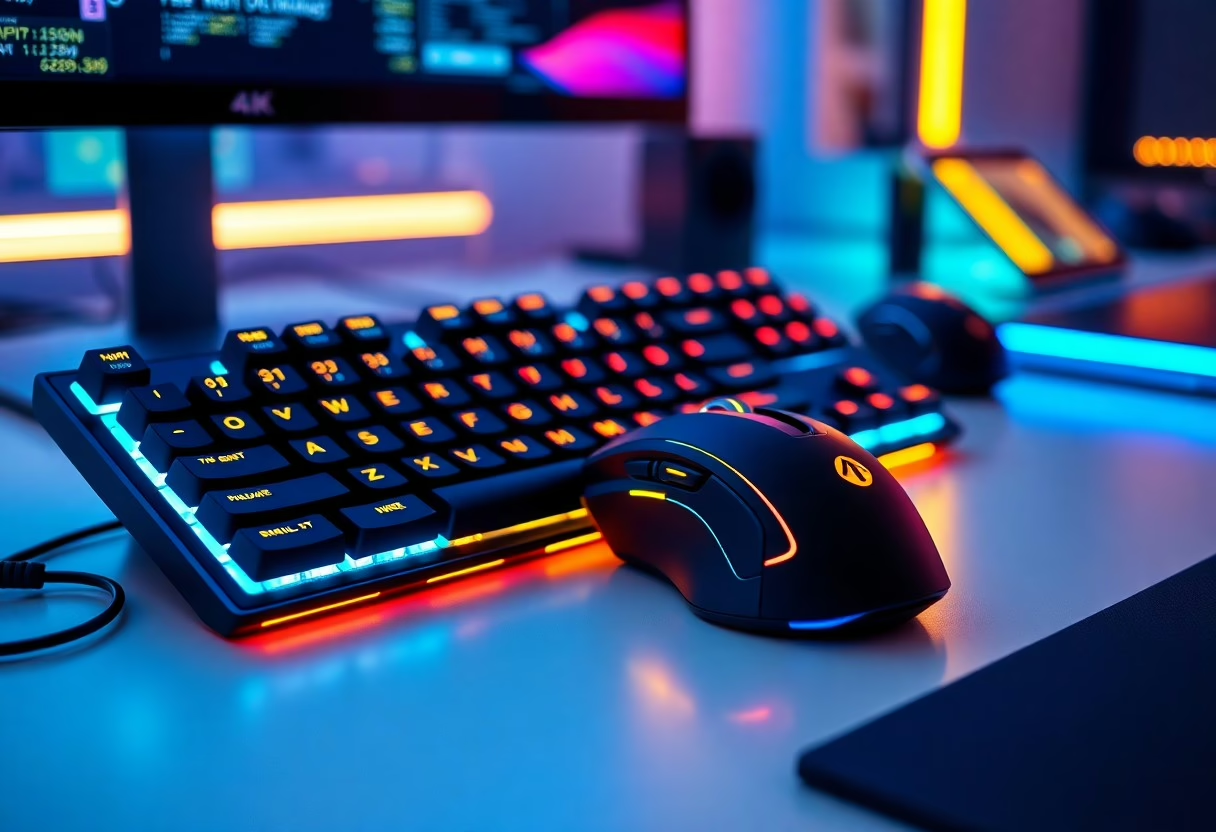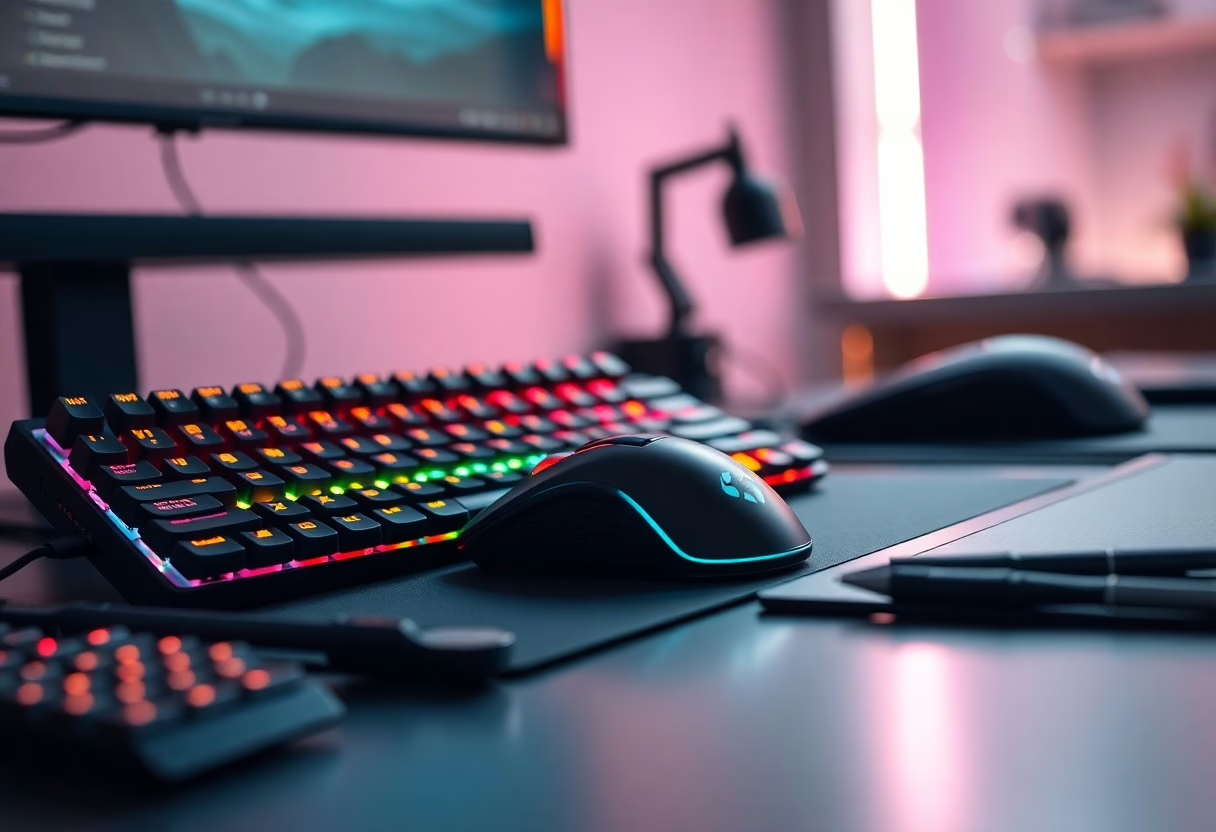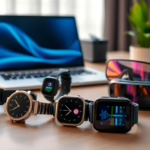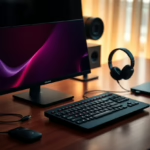The Digital Evolution of Precision
The landscape of computer interaction has transformed dramatically, with next-generation input devices leading the charge toward unprecedented precision and efficiency. From mechanical keyboards to AI-enhanced mice, these tools have become essential for professionals seeking to optimize their digital workflow. This comprehensive guide explores the latest innovations in input technology, helping you make informed decisions about the tools that will elevate your productivity.
Mechanical Keyboards: The Professional’s Choice
Modern mechanical keyboards have evolved far beyond their predecessors, offering customizable switches, programmable functions, and enhanced durability. Today’s professionals demand more than just basic typing functionality – they seek devices that can adapt to their specific needs while maintaining consistent performance throughout long work sessions. The tactile feedback and precise actuation points of mechanical switches provide an unmatched typing experience, contributing to both speed and accuracy.
Advanced Mouse Technology
The modern mouse has transformed into a sophisticated tool for precision control. Current-generation devices feature advanced optical sensors, customizable weight systems, and ergonomic designs that reduce strain during extended use. These improvements allow for pixel-perfect accuracy in design work while maintaining comfort during long working sessions. Wireless technology has also evolved, eliminating the latency issues that once plagued cordless peripherals.
Specialized Input Tools
Professional-grade input devices now include a range of specialized tools designed for specific tasks. Graphics tablets with pressure sensitivity provide artists and designers with natural drawing experiences, while programmable macro pads offer shortcuts for complex software operations. These purpose-built devices enhance workflow efficiency while maintaining the precision necessary for professional work.
Ergonomic Considerations
The importance of ergonomic design cannot be overstated in modern input devices. Manufacturers now prioritize user comfort alongside performance, creating devices that prevent repetitive strain injuries while maintaining high levels of precision. Split keyboards, vertical mice, and adjustable stands have become standard options for professionals seeking to maintain their health during long work sessions.
AI Integration and Smart Features
Artificial intelligence has revolutionized how we interact with input devices. Smart keyboards can learn typing patterns and adjust their response accordingly, while intelligent mice can automatically adjust their sensitivity based on the current application. These AI-driven features enhance both precision and productivity, allowing professionals to focus on their work rather than their tools.
Wireless Innovation
The latest wireless technologies have eliminated the compromises once associated with cordless devices. Modern wireless peripherals offer battery life measured in months rather than days, while maintaining the same level of precision as their wired counterparts. This advancement allows for cleaner workspaces without sacrificing performance.
Customization and Personalization
Today’s input devices offer unprecedented levels of customization. From programmable key layouts to adjustable DPI settings, users can fine-tune their devices to match their exact preferences. This level of personalization ensures that each tool becomes an extension of the user’s working style rather than a limitation.
Future Developments
The horizon for input device technology continues to expand. Emerging technologies like haptic feedback, gesture recognition, and brain-computer interfaces promise to further revolutionize how we interact with our devices. These innovations will likely lead to even more precise and intuitive input methods in the coming years.

Making the Right Choice
Selecting the appropriate input devices requires careful consideration of your specific needs. Consider factors such as:
Professional Requirements
The nature of your work should guide your choice of input devices. Designers might prioritize precision in mouse movement, while programmers might focus on keyboard tactility and durability.
Usage Environment
Your working environment plays a crucial role in device selection. Open offices might benefit from quieter switches, while home offices could accommodate more personalized setups.
Integration Capabilities
Ensure your chosen devices can integrate seamlessly with your existing workflow and software tools. Compatibility with multiple operating systems and customization options should be considered.
Final Thoughts
The evolution of input devices continues to accelerate, with each new generation bringing improvements in precision, comfort, and functionality. By choosing the right combination of tools for your specific needs, you can significantly enhance your productivity and comfort in the digital workspace. Remember that the best input devices are those that become natural extensions of your work process, allowing you to focus on creation rather than operation.



